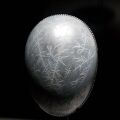Titan (nonfiction): Difference between revisions
No edit summary |
|||
| (4 intermediate revisions by the same user not shown) | |||
| Line 1: | Line 1: | ||
In Classical Greek mythology, the '''Titans''' (Greek: Τιτάν Titán; plural: Τiτᾶνες Titânes) and Titanesses (or Titanides; Greek: Τιτανίς Titanís; plural: Τιτανίδες Titanídes) were members of the second order of divine beings, descending from the primordial deities and preceding the Olympian deities. | [[File:The_Fall_of_the_Titans_-_Cornelis_Cornelisz._van_Haarlem.jpg|thumb|''The Fall of the Titans'' by Cornelis Cornelisz van Haarlem (1596–1598).]]In Classical Greek mythology, the '''Titans''' (Greek: Τιτάν Titán; plural: Τiτᾶνες Titânes) and Titanesses (or Titanides; Greek: Τιτανίς Titanís; plural: Τιτανίδες Titanídes) were members of the second order of divine beings, descending from the primordial deities and preceding the Olympian deities. | ||
Based on Mount Othrys, the Titans most famously included the first twelve children of the primordial Gaia (Mother Earth) and Uranus (Father Sky). They were giant deities of incredible strength, who ruled during the legendary Golden Age, and also composed the first pantheon of Greek deities. | Based on Mount Othrys, the Titans most famously included the first twelve children of the primordial Gaia (Mother Earth) and Uranus (Father Sky). They were giant deities of incredible strength, who ruled during the legendary Golden Age, and also composed the first pantheon of Greek deities. | ||
| Line 13: | Line 13: | ||
== In the News == | == In the News == | ||
<gallery | <gallery> | ||
File:Nobel Ice (Fabergé egg).jpg| | File:Nobel Ice (Fabergé egg).jpg|link=Dysprosium Titanate|Fabergé egg recently commissioned by [[Dysprosium Titanate]] made from [[Spin ice (nonfiction)|Spin Ice]], may be trap for [[Roger Zelazny]]. | ||
</gallery> | </gallery> | ||
== Fiction cross-reference == | == Fiction cross-reference == | ||
* [[Dysprosium Titanate]] | * [[Dysprosium Titanate]] | ||
* [[Gnomon algorithm]] | |||
* [[Gnomon Chronicles]] | |||
== Nonfiction cross-reference == | |||
External links | == External links == | ||
* [https://en.wikipedia.org/wiki/Titan_(mythology) Titan (mythology)] @ Wikipedia | * [https://en.wikipedia.org/wiki/Titan_(mythology) Titan (mythology)] @ Wikipedia | ||
[[Category:Nonfiction (nonfiction)]] | [[Category:Nonfiction (nonfiction)]] | ||
[[Category:Mythology (nonfiction)]] | |||
[[Category:Titans (nonfiction)]] | |||
Latest revision as of 11:15, 5 August 2021
In Classical Greek mythology, the Titans (Greek: Τιτάν Titán; plural: Τiτᾶνες Titânes) and Titanesses (or Titanides; Greek: Τιτανίς Titanís; plural: Τιτανίδες Titanídes) were members of the second order of divine beings, descending from the primordial deities and preceding the Olympian deities.
Based on Mount Othrys, the Titans most famously included the first twelve children of the primordial Gaia (Mother Earth) and Uranus (Father Sky). They were giant deities of incredible strength, who ruled during the legendary Golden Age, and also composed the first pantheon of Greek deities.
Among the first generation of twelve Titans, the females were Mnemosyne, Tethys, Theia, Phoebe, Rhea, and Themis and the males were Oceanus, Hyperion, Coeus, Cronus, Crius, and Iapetus.
The second generation of Titans consisted of Hyperion's children Helios, Selene, and Eos; Coeus' children Lelantos, Leto, and Asteria; Iapetus' sons Atlas, Prometheus, Epimetheus, and Menoetius; Oceanus' daughter Metis; and Crius' sons Astraeus, Pallas, and Perses.
Like Cronus overthrowing his father Uranus, the Titans were overthrown by Cronus' children (Zeus, Hades, Poseidon, Hestia, Hera and Demeter), in the Titanomachy (or "War of the Titans").
The Greeks may have borrowed this theme from the Ancient Near East.
In the News
Fabergé egg recently commissioned by Dysprosium Titanate made from Spin Ice, may be trap for Roger Zelazny.
Fiction cross-reference
Nonfiction cross-reference
External links
- Titan (mythology) @ Wikipedia

